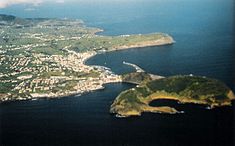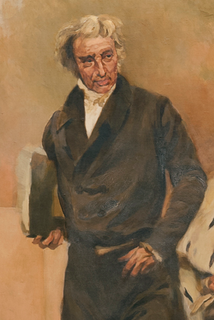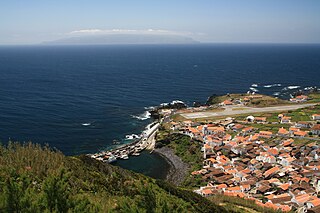
Santa Cruz das Flores is a municipality situated in the north half of the island of Flores, in the Portuguese archipelago of the Azores. Situated in the sparsely populated Western Group, the population in 2011 was 2,289 inhabitants in an area that covers approximately 70.91 square kilometres (27.38 sq mi), bordering the southern municipality of Lajes das Flores.
The Historical Institute of Terceira, or literally the Historical Institute of the Island of Terceira, or IHIT, is a private association and cultural institute, dedicated to the investigation and studying of the islands of the Azores. The institute is headquartered in the classical Convent of São Francisco in Angra do Heroísmo.
Father José António Camões was a Portuguese Catholic priest, poet and historian. He wrote several works of satire, including his heroic satire O Testamento de D. Burro, Pai dos Asnos.

The Fort of Negrito is a 16th century maritime fort situated in the civil parish of São Mateus da Calheta, in the municipality of Angra do Heroísmo on the island of Terceira, Azores, Portugal.

Fortress of São Mateus da Calheta is a fort in the civil parish of São Mateus da Calheta, in the municipality of Angra do Heroísmo, island of Terceira, in the Portuguese archipelago of the Azores.

Fort of Santa Cruz, is a 16th-century fortification located in the civil parish of Angústias, municipality of Horta, on the island of Faial in the Portuguese Azores. Occasionally referred to as the Castelo de Santa Cruz by locals, it is situated in the historic centre of the city, on the edge of Horta Bay. It was constructed to work in conjunction with the Fort of Bom Jesus at the mouth of the Ribeira da Conceição and Fort of Greta along the coast of the extinct spatter cone Monte da Guia, to defend the entrance to the harbour and southern access to the Bay.

The Convent of São Pedro de Alcântara is a Baroque convent and church complex in the civil parish of São Roque, in the municipality of the same name, in the Portuguese archipelago of the Azores.
Azores Day is a regional holiday established to commemorate the Azorean political autonomy established in the Portuguese constitution, following the Carnation Revolution. The date corresponds to the festival of the Holy Spirit, a celebration based in the archipelago's religious and cultural history, held on the Sunday of Pentecosts, a movable public holiday observed only in the archipelago of the Azores.
José Guilherme Reis LeiteGC IH, is a professor, historian and Azorean politician, whose functions included his role as Regional Secretary for Education and Culutre, deputy and President of the Legislative Assembly of the Azores, in addition to representative for the Azores in the Portuguese National Assembly.
A Captaincy-General of the Azores (1766—1832) was a politico-administrative structure of governance imposed in the Azores on 2 August 1766, with its seat in Angra. It remained the de facto system of governance for 65 years, until it was abolished on 4 June 1832 by D. Peter IV, but by 1828 its de jure status had made it nonoperational, owing to the revolutionary movements that lead to the Liberal Wars. The creation of the Captaincy-General was part of the Pombaline reforms to the Portuguese administration, during the reign of Joseph I, under the initiatives of Sebastião José de Carvalho e Melo, the Marquess of Pombal, then prime minister. A Captaincy-General operated from the Palace of the Captains-General, under the direction of the titular Captain-General, who operated as the Governor of the Azores, with additional jurisdiction on every island of the Azorean archipelago. The Captaincy-General was succeeded by the Province of the Azores, an ephemeral administrative structure that was collapse in the immediate years.
The 1926 Horta earthquake, occurred at 8:42 a.m. on 31 August. It caused the destruction of many of the buildings located in the city of Horta, the central group of the Portuguese autonomous region of the Azores, resulting in the death of nine and the partial or complete destruction of 4,138 buildings.

The Windmills of Corvo is a windmill located in the municipality of Vila do Corvo, island of Corvo, in the Portuguese archipelago of the Azores.

José Mendes Melo Alves was an Azorean Politician that, in addition to other positions, was a member of the Junta Regional dos Açores and the Azores Regional Government and Presidency, elected to the Legislative Assembly of the Azores and the Assembly of the Republic (Portugal).





















